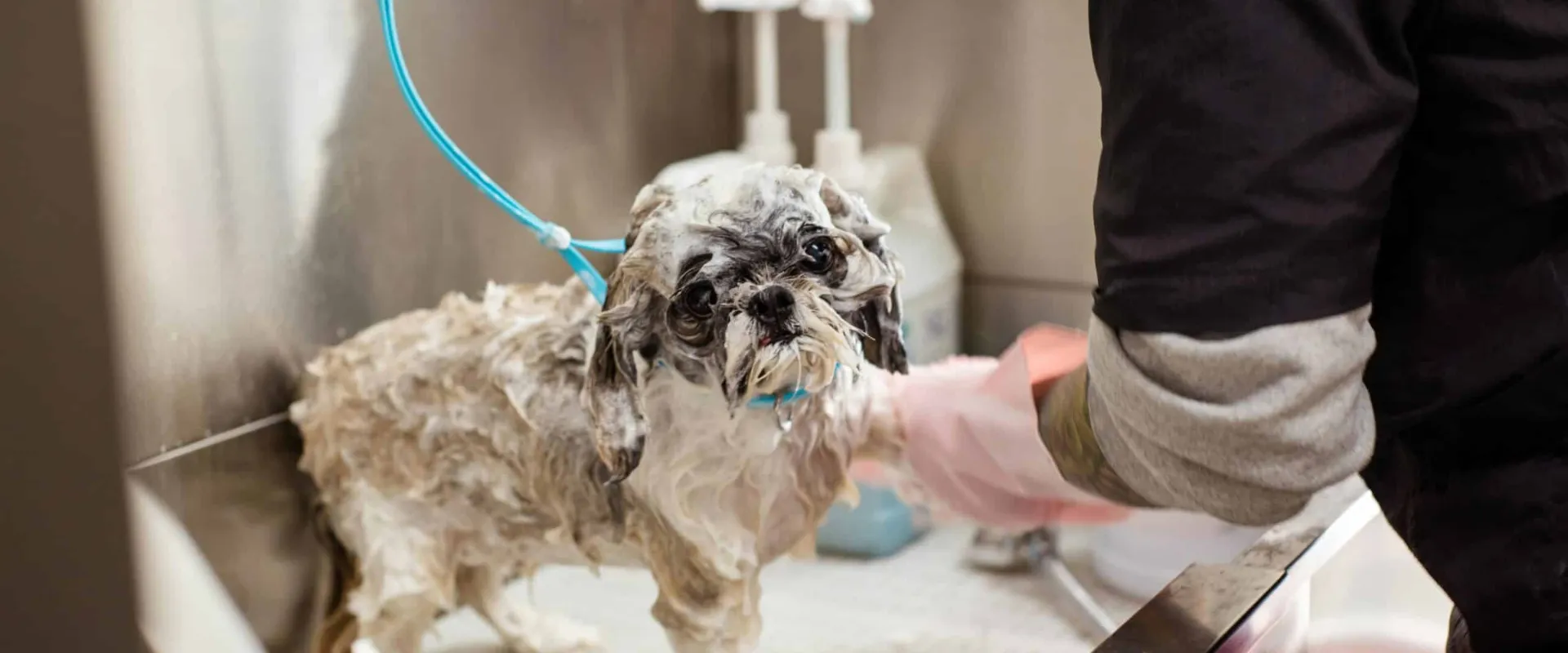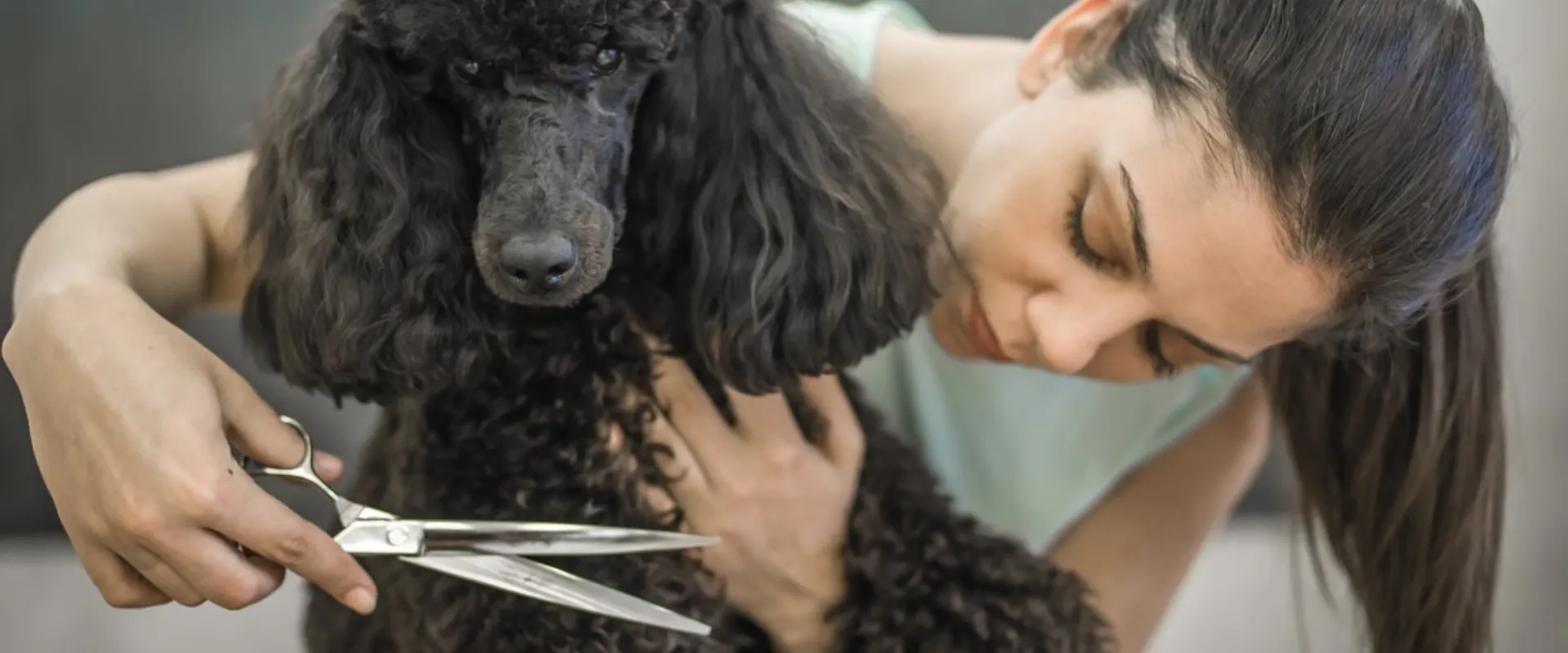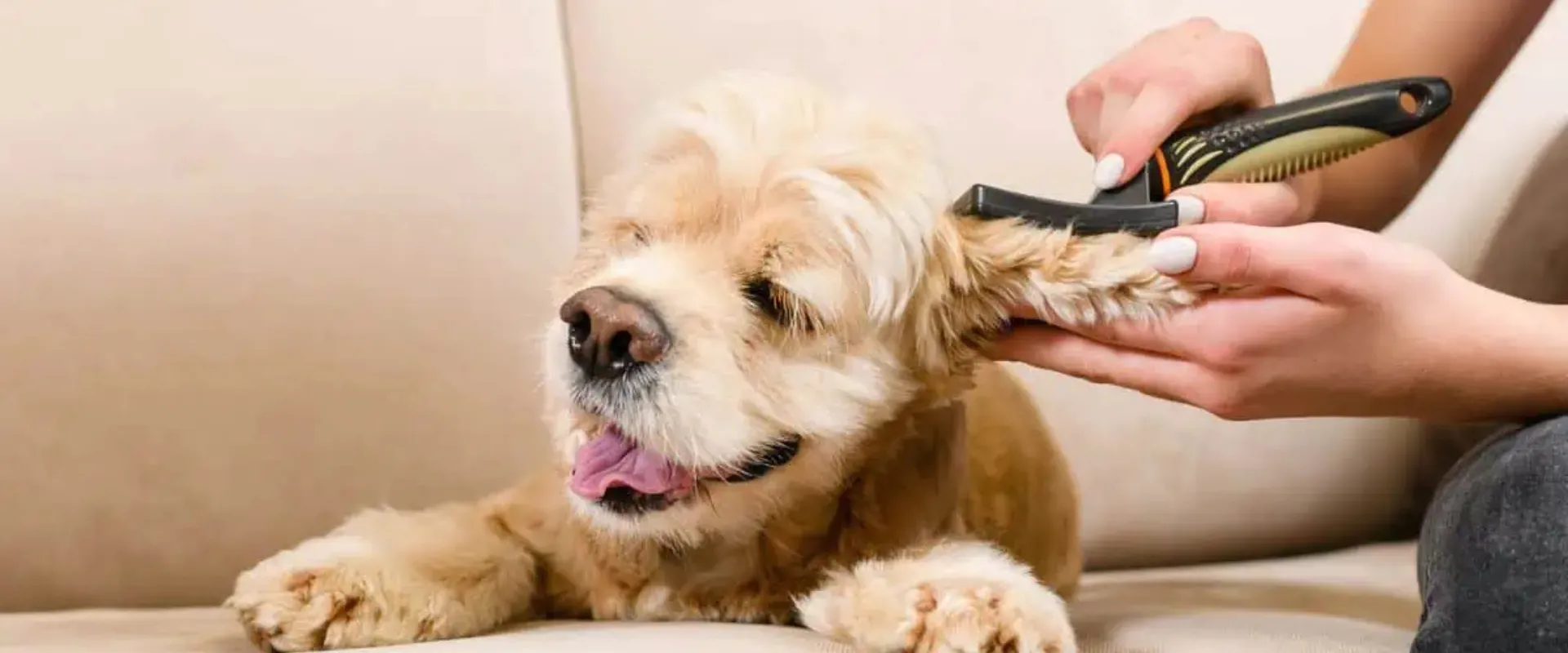Grooming can be a challenge when your dog squirms, snaps, or seems scared. Positive grooming experience strengthens the bond between you and your pet while keeping them healthy and comfortable. Our mobile dog grooming franchise helps pet owners and groomers tackle tough grooming sessions with ease.
This guide shares practical strategies to handle difficult dogs during grooming, ensuring a calm and safe process for everyone. Whether you’re a pet owner or a professional groomer, these tips will help you turn grooming into a stress-free routine.
Understanding Why Dogs Act Out During Grooming
Dogs may act difficult during grooming due to fear, discomfort, or past negative experiences. Recognizing the reasons behind their behavior is the first step to making grooming a dog easier. By addressing these triggers, you can create a more relaxed environment for your dog, a key aspect of anxious dog grooming.
Common Triggers for Difficult Behavior
Some dogs feel anxious about unfamiliar tools, loud noises like clippers, or being touched in sensitive areas like their paws or ears. Others may have had a bad grooming experience, making them wary. Breeds with high energy, like terriers, may struggle to stay still, while others might show aggression out of fear.
Understanding dog behavior during grooming helps you approach each session with patience and care. For instance, anxious dog grooming can often be managed with a gentle approach and positive reinforcement, a cornerstone in a pet grooming business.
Signs of Stress or Aggression
Watch for signs like growling, baring teeth, trembling, or trying to escape. These behaviors signal discomfort or fear. If your dog shows these signs, pause and give them a moment to relax. Recognizing these cues is key to grooming aggressive dogs tips, as it allows you to adjust your approach before the situation escalates, ensuring grooming profitability through safe practices.
Preparing for a Successful Grooming Session
Preparation sets the stage for a smooth grooming experience. A little planning can make a big difference in how your dog responds, helping you handle difficult dogs effectively.
Create a Calm Environment
Choose a quiet, familiar space for dog grooming services to reduce anxiety. Remove distractions like loud music or other pets. Use a non-slip mat to keep your dog comfortable and secure. A calm setting supports calm anxious dogs’ grooming by making your dog feel safe and relaxed.
Introduce Tools Gradually
Let your dog sniff and explore grooming tools like brushes or clippers before starting. Turn on the clippers briefly to get them used to the sound. Offer treats during this process to build positive associations. This gradual introduction is a cornerstone of grooming aggressive dogs tips, as it reduces fear of unfamiliar equipment.
Techniques to Handle Difficult Dogs During Grooming
Once you’re prepared, use these techniques to keep your dog calm and cooperative. These strategies focus on patience, positive reinforcement, and gentle handling to make grooming a positive experience.
Use Positive Reinforcement
Reward your dog with treats, praise, or a favorite toy when they stay calm during grooming. For example, give a treat after brushing a small area or touching their paws. This builds trust and encourages good dog behavior during grooming. Over time, your dog will associate grooming with rewards, making it easier to handle difficult dogs.
Break Sessions into Short Intervals
Long grooming sessions can overwhelm a nervous dog. Begin with short, five-minute sessions, focusing on a single task, such as brushing or nail trimming. Gradually increase the time as your dog gets comfortable. Short sessions are especially effective for calm anxious dogs during grooming, as they prevent your dog from feeling stressed or overstimulated.
Handle Sensitive Areas with Care
Areas like paws, ears, and tails can be sensitive, causing dogs to react. Move slowly and use a gentle touch. If your dog resists, distract them with a treat or a toy while you work. This careful approach is critical when learning to handle difficult dogs during grooming in a pet grooming business.
Managing Aggressive or Anxious Dogs
Some dogs show more intense reactions, like growling or snapping. These behaviors require extra caution and specific techniques to ensure safety for both you and your dog.
Use a Muzzle Safely
If your dog shows signs of aggression, a properly fitted muzzle can keep everyone safe. Introduce the muzzle slowly, letting your dog wear it for short periods with treats to create a positive association. Never force a muzzle on a struggling dog, as this can increase stress. Using a muzzle is a practical part of grooming aggressive dogs, provided it is handled with care.
Stay Calm and Confident
Dogs pick up on your emotions. If you’re nervous, your dog may sense it and become more anxious. Speak in a soothing tone, move slowly, and avoid sudden movements. Your calm demeanor helps calm anxious dogs during grooming, reassuring your dog that they’re safe, reflecting effective leadership strategies.
When to Seek Professional Help
Sometimes dogs can become anxious or difficult during grooming, and that’s when professional support makes all the difference. Kontota’s mobile dog grooming services are designed to create a calmer, more personal environment compared to busy salons. With no cages, less noise, and one-on-one attention, pets often feel more at ease.
Kontota groomers focus on building trust with pets over time, helping even nervous or older dogs feel comfortable. As one customer shared, their rescued dog thrived because “he never has to go to a crate,” and the groomer handled him with care and patience. Choosing a professional service like Kontota can turn grooming into a more positive experience for pets and their owners alike.
Tips for Long-Term Grooming Success
Building a positive grooming routine takes time, but consistency pays off. These tips help ensure your dog becomes more comfortable with grooming over time, making it easier to handle difficult dogs during grooming.
Start Grooming Early
If you have a puppy, introduce grooming early to build good habits. Even adult dogs can learn to tolerate grooming with patience. Regular, short sessions help your dog get used to the process, improving their behavior during grooming over time.
Maintain a Consistent Schedule
Stick to a regular grooming schedule, whether it’s weekly brushing or monthly baths. Consistency helps your dog know what to expect, reducing anxiety. A predictable routine supports calm, anxious dogs’ grooming and makes each session smoother, contributing to work-life balance for dog groomers.
Work with Your Dog’s Personality
Every dog is unique. High-energy dogs may need a walk before grooming to burn off excess energy, while shy dogs may respond better to a quiet, slow-paced session. Tailor your approach to your dog’s personality for the best results in grooming aggressive dogs tips.
FAQs
Why is my dog aggressive during grooming?
Your dog may feel scared, uncomfortable, or have had a bad experience. Use positive reinforcement and short sessions to build trust.
How can I calm my anxious dog during grooming?
Create a calm environment, use treats, and introduce tools slowly. These steps, key to calming anxious dogs during grooming, help reduce stress and make grooming easier.
Should I groom my dog myself or hire a professional?
If your dog is very difficult to groom, professional groomers can help. They have the skills to manage challenging dog behavior during grooming safely.
Partner with Kontota Franchising for Stress-Free Grooming
Learning to handle difficult dogs during grooming takes patience, practice, and the right approach. By understanding your dog’s behavior, preparing carefully, and using gentle techniques, you can make grooming a positive experience. For those tough cases, Kontota Franchising offers an expert mobile dog grooming franchise tailored to your dog’s needs. Our trained groomers ensure a calm, safe process for even the most challenging dogs.
Book a call today to learn about our mobile dog grooming franchise opportunities!





